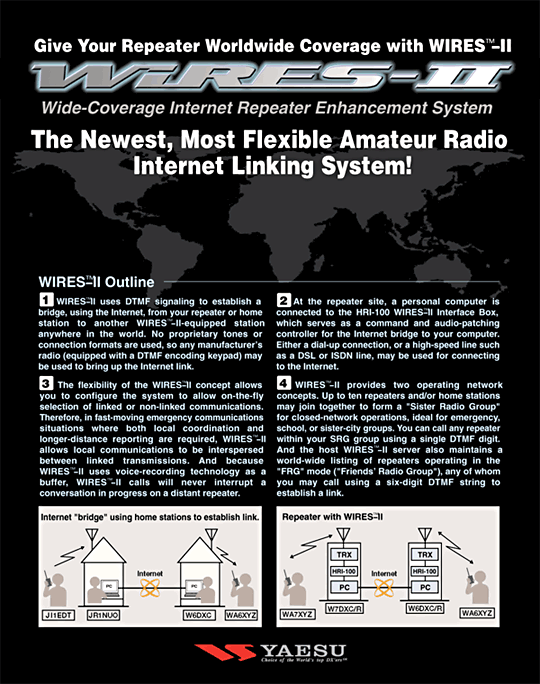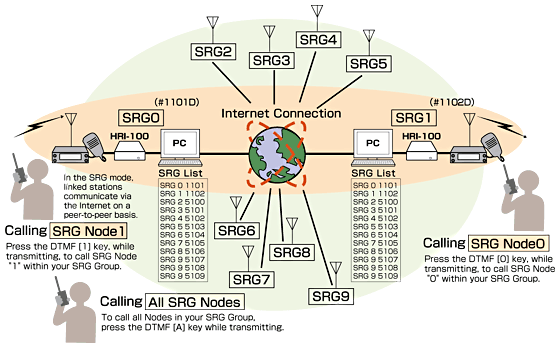|
WIRESTM
began as an experimental Internet linking project in the United States
(California), and the initial Beta testing led to the development of
an expanded and enhanced protocol, known as WIRES-II.
WIRESTM-II is a system of using the
Internet's voice-communication capability as a bridge between distant
stations. Where simplex- and repeater-based communication was basically
limited to a local coverage area, with WIRES-II it is now possible to
use the Internet as a long-distance link, allowing city-to-city, country-to-country,
or continent-to-continent contacts from your hand-held or mobile rig.
With WIRESTM linking, the distance
between mobile or hand-held units becomes irrelevant, and the world
becomes a much smaller place!
WIRESTM uses DTMF signaling to establish
a bridge, using the Internet, from your repeater or home station to
another WIRES-equipped station anywhere in the world. No proprietary
tones or connection formats are used, so any manufacturer's radio (equipped
with a DTMF encoding keypad) may be used to bring up the Internet link.
The heart of a WIRESTM-II node is the
HRI-100 Interface Box. At the repeater site, a personal computer is
connected to the HRI-100 Interface Box, which serves as a command and
audio-patching controller for the Internet bridge to your computer.
Either a dial-up connection, or a high-speed line such as a DSL or ISDN
line, may be used for connecting to the Internet.
|


